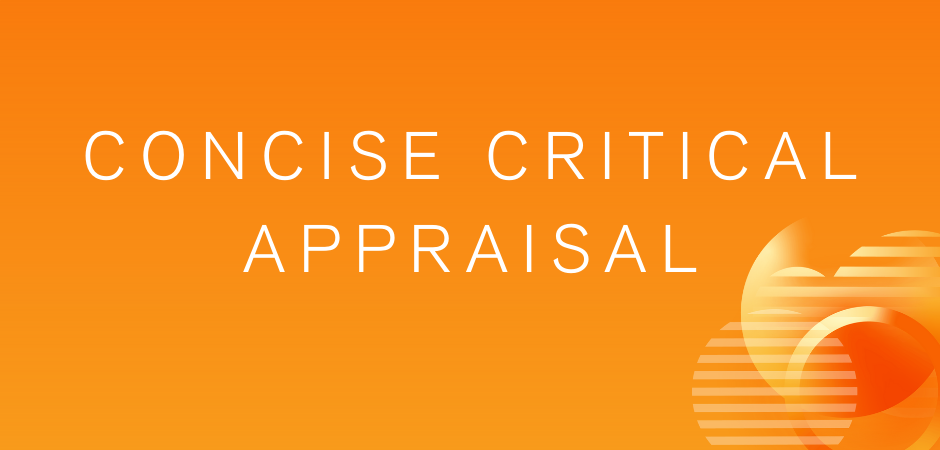Ruemmler et al (Resuscitation. 2018;132:56-62) set out to compare intermittent positive pressure ventilation to passive oxygenation (continuous positive airway pressure) and a novel ultra-low tidal volume ventilation (ULTVV) regimen.
Despite a meager 0.1% incidence and an abundance of academic research, cardiac arrests continue to be associated with high mortality rates (60%-90%). American and European resuscitation guidelines continue to focus on early defibrillation and high-quality chest compressions. However, due to conflicting evidence of outcome relevance, there have been practically no updates on ventilation strategy during CPR from the dated 10-breaths-per-minute strategy.
Furthermore, observational data from Maertens et al (
Resuscitation. 2013;84:921-6) and McInnes et al (
Resuscitation. 2011;82:1025-1029) show that healthcare providers consistently violate these goals with hyperventilation, leading to significant hypotension and worsening the overall clinical outcome. Several strategies, including high-flow oxygenation, synchronized ventilation, passive thorax expansion, and chest compression-only resuscitation, have been proposed by Kill et al (
Crit Care Med. 2014;42:e89-e95) but none were able to provide convincing evidence for improvements. “Lung rest” or ultra-low tidal volume ventilation (ULTVV) with a tidal volume in the range of 2-3 mL/kg body weight was developed during severe acute respiratory distress syndrome and extracorporeal membrane oxygenation to improve pulmonary function and integrity.
Therefore, Ruemmler et al (
Resuscitation. 2018;132:56-62) determined to study the effects of this novel ULTVV strategy on pulmonary gas exchange, airway pressures, and incidence of lung injury in a porcine model compared to intermittent positive pressure ventilation (IPPV) and continuous positive airway pressure (CPAP), defined as 10 L oxygen flow with 5 mbar of positive end-expiratory pressure. Secondarily evaluated were the return of spontaneous circulation (ROSC) and various immunologic markers.
The study demonstrated the feasibility of ULTVV during CPR with no significant difference in Pao
2 or rate of ROSC and a moderate improvement in Pao
2/Fio
2 ratio (
p = 0.002) when compared to IPPV or CPAP. There was statistically significant improvement in mean airway pressure, peak pressure, and lessening of airway driving pressure when compared to IPPV, with a decreased Paco
2 level when compared to CPAP (
p = 0.01). Lung pathology demonstrated significantly less overall damage to parenchyma with ULTVV (
p = 0.003), along with a massive reduction in hippocampal inflammatory markers when compared to IPPV. Ventilation/perfusion (V/Q) analyses measured at baseline and after ROSC showed a lower V/Q fraction in ULTVV, indicating a lower amount of hyperventilated lung and less pulmonary shunt, hinting at better perfusion. The authors hypothesized that this effect could also be due to increased cardiac output following lower intrapulmonary and thoracic pressures.
Prospective randomized controlled studies involving CPR-related interventions are rare and challenging because of ethical dilemmas concerning withholding of lifesaving interventions. Using a trusted animal model, the authors were able to demonstrate that low-volume (2-3 mL/kg/ideal body weight), high-rate (> 50 breaths/min) ventilation improves oxygenation while decreasing ventilator pressures during chest compressions without the added burden of hypercarbia that accompanies standard CPAP applications. There were also fewer histologic signs of lung parenchymal injury and improved shunt fractioning on ROSC. Theoretically, lessening of hyperventilation avoids the increased intrathoracic pressure and resultant decreased cardiac filling noted in previous studies (
Aufderheide TP, et al. Circulation. 2004;109:1960-1965).
Of course the largest limitation of a translational study is that the subject is an animal model and findings are not always applicable to a clinical setting. Furthermore the study used a large amount of vasopressin, a drug known to induce ROSC in the porcine model, and which has been removed from the standard advanced cardiac life support algorithm. Additionally, these animals were in cardiac arrest with shockable rhythm, which generally have a more favorable outcome. The authors note that the study was crafted to achieve higher levels of ROSC than would be clinically possible in a realistic setting.
This study opens up a new horizon of research and thought in this area. Volutrauma and barotrauma can cause iatrogenic lung injury during CPR with suboptimal ventilation, which can dampen overall patient outcomes. This novel strategy of ULTVV points toward improved physiologic parameters after ROSC. Whether this translates into significant clinical outcomes warrants further research.
Coauthors of this installment of Concise Critical Appraisal
:
Mohammed Nabeel, MD, is a senior critical care medicine fellow at the University of Maryland Medical Center in Baltimore, Maryland, USA.
James Lantry III, MD, is an assistant professor of emergency and critical care medicine and the associate program director of the Critical Care Fellowship Program at the University of Maryland Medical Center in Baltimore, Maryland, USA. Dr. Lantry is an editor of Concise Critical Appraisal
.
